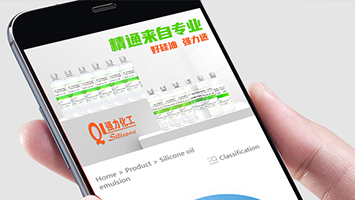For adjusting the hardness of silicone potting compounds, low-viscosity dimethyl silicone oil is the more direct and effective choice, while vinyl silicone oil is typically used to control crosslink density or serve as a base polymer. Below is a detailed analysis and recommendation:
I. Dimethyl Silicone Oil: The Core Choice for Hardness Adjustment
1. Mechanism of Action
Dimethyl silicone oil (PDMS) is an inert plasticizer. It softens the potting compound through physical filling and reducing crosslink density. Its molecular chains do not participate in the curing reaction; instead, it acts as a "diluent" dispersed in the system, weakening the tightness of the polymer network and thereby lowering hardness.
2. Recommended Viscosity
-
Common range: 50~1000 cSt (at 25℃).
- Low viscosity (50~200 cSt): Excellent fluidity, suitable for scenarios requiring rapid penetration and degassing (e.g., electronic component potting). However, excessive addition may reduce strength.
- Medium to high viscosity (500~1000 cSt): Effectively reduces hardness while maintaining certain mechanical properties, often used in industrial applications with strength requirements (e.g., power module packaging).
- Typical case: 200 cSt dimethyl silicone oil is commonly used in electronic potting compounds. Adding 5%~10% of it can reduce the Shore A hardness by 5~10 degrees.
3. Precautions
- Addition ratio: For every 2% addition of dimethyl silicone oil, the Shore A hardness decreases by approximately 1 degree. However, excessive addition (over 20%) may cause oil bleeding and reduced weather resistance.
- Compatibility: Select dimethyl silicone oil with good compatibility with the base polymer (e.g., methyl vinyl silicone rubber) to avoid phase separation.
II. Vinyl Silicone Oil: A Regulator of Crosslink Density
1. Mechanism of Action
The molecular chains of vinyl silicone oil contain vinyl groups (-CH=CH₂) at the ends or side chains. It undergoes a hydrosilylation reaction with hydrogen-containing silicone oil under the action of a platinum catalyst to form a three-dimensional crosslinked network. Its main function is to control crosslink density rather than directly adjust hardness.
2. Relationship Between Viscosity and Hardness
-
Low-viscosity vinyl silicone oil (e.g., 20~55 mPa·s):
Improves the fluidity and filler dispersibility of the potting compound, but the hardness after crosslinking may increase due to dense crosslinking points. For example, when 1000 cSt vinyl silicone oil is used with hydrogen-containing silicone oil, the crosslink density can reach 0.2 mol/cm³, resulting in high hardness.
-
High-viscosity vinyl silicone oil (e.g., 10,000~20,000 mPa·s):
Longer molecular chains form a more flexible network after crosslinking, which can reduce hardness. For example, high-viscosity terminal vinyl silicone oil is used in power battery potting compounds, allowing hardness to be controlled at Shore A 40~60.
3. Application Scenarios
- Base polymer: Vinyl silicone oil is the main raw material for addition-cure potting compounds. Its molecular weight and vinyl content directly affect the final performance. For example, terminal vinyl silicone oil (Vi-PDMS) is often used in electronic potting compounds, while side-chain vinyl silicone oil (Vi-PMVS) is suitable for industrial scenarios requiring high tear resistance.
- Auxiliary adjustment: Hardness can be indirectly optimized by adjusting the ratio of vinyl silicone oil to hydrogen-containing silicone oil. For example, reducing the amount of hydrogen-containing silicone oil can lower crosslink density and thus reduce hardness.
III. Comprehensive Recommendations
1. Hardness Reduction: Prioritize Dimethyl Silicone Oil
- Applicable scenarios: Cases requiring significant softening of the potting compound, such as stress relief for electronic components and flexible packaging.
-
Operation steps:
① Select dimethyl silicone oil with a viscosity of 50~1000 cSt (200~500 cSt is recommended);② Control the initial addition amount at 5%~10%, and gradually test the hardness change;③ Perform vacuum degassing during mixing to avoid bubble residue affecting performance.
2. Fine Hardness Adjustment: Combine with Vinyl Silicone Oil
- Applicable scenarios: Cases requiring precise control of crosslink density, such as thermally conductive potting compounds and high-temperature applications.
-
Operation steps:
① Select low-viscosity terminal vinyl silicone oil (e.g., 1000~5000 mPa·s) as the base polymer;② Control crosslink density by adjusting the amount of hydrogen-containing silicone oil (usually 3~5 phr);③ Add a small amount of dimethyl silicone oil (<5%) to further optimize hardness.
3. Performance Balance
- Strength vs. hardness: Excessive addition of dimethyl silicone oil reduces tensile strength and tear resistance. It is recommended to use it in combination with reinforcing fillers (e.g., fumed silica).
- Temperature resistance vs. insulation: The crosslinked network of vinyl silicone oil improves temperature resistance (-50~200℃) and insulation performance (volume resistivity >1×10¹⁵ Ω·cm), making it suitable for scenarios with high reliability requirements.
IV. Typical Formula Reference
| Application Scenario | Base Polymer | Plasticizer (Dimethyl Silicone Oil) | Crosslinker (Hydrogen-Containing Silicone Oil) | Filler | Hardness (Shore A) |
|---|---|---|---|---|---|
| Electronic Component Potting | Terminal Vinyl Silicone Oil (1000 mPa·s) | 200 cSt (5~10%) | 3 phr | Alumina (30%) | 30~40 |
| Power Battery Sealing | High-Viscosity Terminal Vinyl Silicone Oil (20,000 mPa·s) | 500 cSt (3~5%) | 4 phr | Boron Nitride (50%) | 50~60 |
| Flexible Optical Packaging | Low-Viscosity Terminal Vinyl Silicone Oil (200 mPa·s) | 100 cSt (8~12%) | 2 phr | None | 20~30 |
V. Summary
- Hardness reduction: Prioritize low-viscosity dimethyl silicone oil (50~1000 cSt), which softens the compound through physical dilution. The addition amount is usually 5%~15%.
- Crosslink density control: Vinyl silicone oil is used to build a three-dimensional network. Hardness is indirectly optimized by adjusting its molecular weight, vinyl content, and ratio to hydrogen-containing silicone oil.
- Practical application: It is recommended to combine the characteristics of both. For example, use vinyl silicone oil as the base polymer in addition-cure potting compounds, and add a small amount of dimethyl silicone oil for fine adjustment to achieve the optimal performance balance.
If you need a simplified version of this translation (e.g., for quick communication with overseas suppliers) or want to adjust the terminology to match a specific regional standard (such as EU or US material specs), let me know and I can refine it further.




